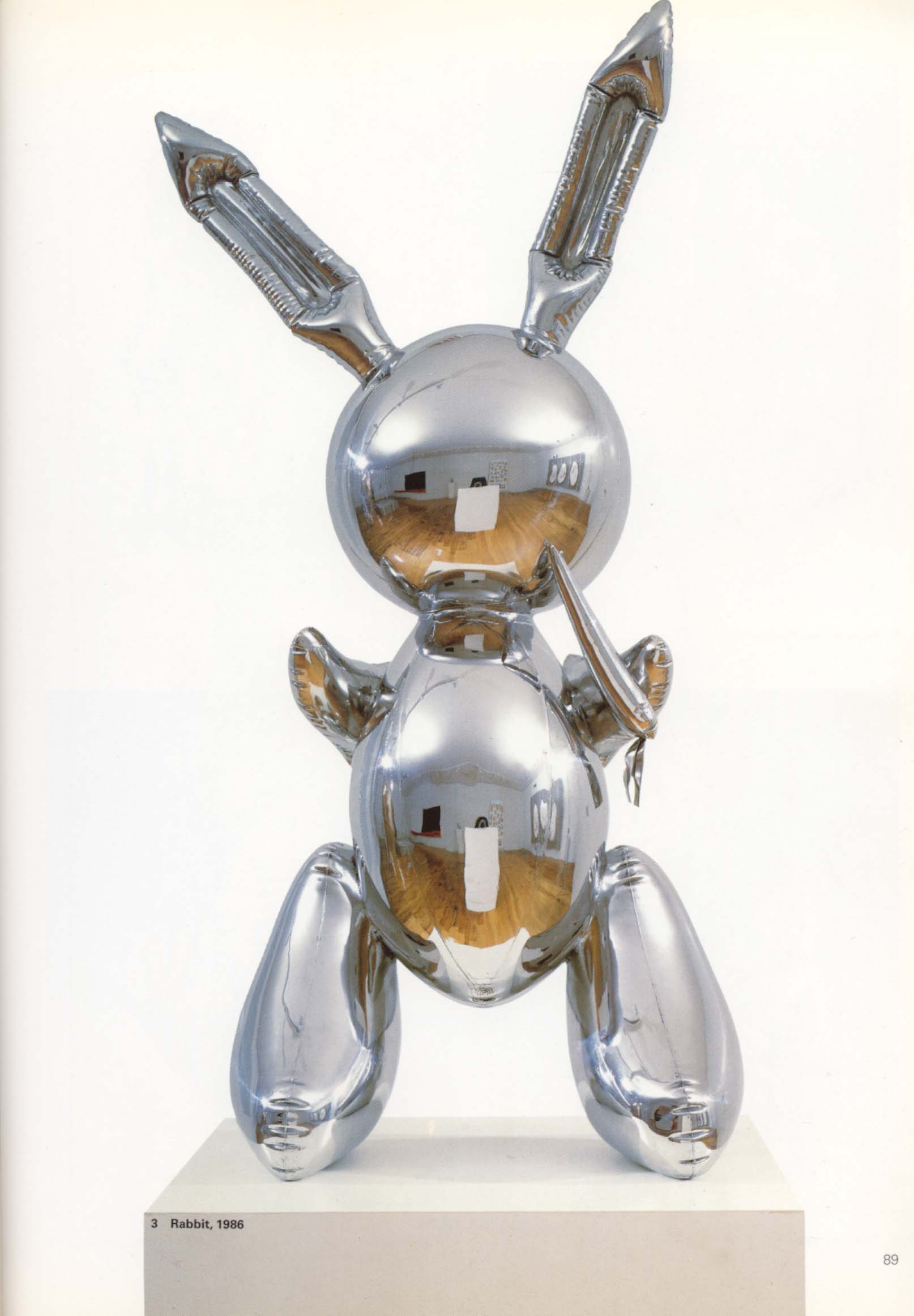2 klip fra Jerry Saltz' anmeldelse på vulture.com af Koons' retrospektive udstilling på The Whitney i New York - bemærk den fine, selvoverrumplende forskydning fra den skeptiske erindring om Statuary-serie til det (også sprogligt) elaterede gensyn med selve kaninen:
Which leaves one to wonder if there’s any way a Koons show can enlighten or surprise, let alone shock. Before even seeing “A Retrospective,” I knew that there are whole bodies of Koons’s work I have never related to. I’ve loved a handful of paintings for looking like they’ve never been touched by living beings but have been made by scores, maybe hundreds, of hands, almost transcending human touch, for their mutilating of ambiguities. Most of the others, though, strike me as hyper-anal-retentive Pop collages peppered with cartoon creatures and vulvas. I don’t like his work when it’s all about technical prowess, shininess, cuteness, or replication of an everyday object or children’s toy. Except for the giant Balloon Dog (oddly, only the red one) and a few of the other huge, shiny baubles for billionaires, I don’t like much that he made between 1994 and 2007. Nor does much of the work from the “Statuary” series, from 1986, transcend its buzz of fun: These nifty, simple casts of everyday objects or works of art have density and surface, but little more. And I don’t get much from the carved polychromed wood and porcelain sculptures of bears, Buster Keaton, and St. John the Baptist from the 1988 “Banality” series. They are all curio, empty idea, obviousness, control, and kitsch. The big exception from this series is the large porcelain Michael Jackson cradling his beloved pet monkey, Bubbles, in which both figures have painted white faces — a sculpture that should remain uncanny as long as the memory of this pop star lasts. Otherwise, though, this work never changes or displaces thought. (String of Puppies is riveting, too, even though it got Koons in trouble for supposedly stealing the image from a postcard. He lost the case, even though his work has no resemblance to the so-called stolen one. Absurd.)
The Whitney’s show shocked me — by catching me completely off guard. Ingeniously organized by Scott Rothkopf to entirely bypass hysteria and spectacle, “A Retrospective” is as near to a great show of this colossally controlling artist as will be possible as long as Koons is alive. (...)
Rothkopf opens the third floor with a bang, a gallery with the 1986 “Statuary” series that centers on Koons’s summa, Rabbit. The manifest presence of this oscillating object, originally exhibited in a 1986 four-person show at Sonnabend Gallery in Soho, took Koons into the very heart of hollowness — and made him. A highly polished stainless cast of an inflatable bunny with crinkly phallic ears holds a carrot, giving off the mien of a golden calf, an idol of the id, an icon for something not yet made, a kaleidoscopic looking-glass that creates cracks in meaning. We’re psychically aware how Koons has captured his breath inside this and made it last forever. In all his attempts to end entropy, Rabbit comes closest — even if it’s doomed, like all things, to become Shelley’s Ozymandias. The cacophony of clarity that is Rabbit’s reflective, undulating surface turns the world into parabolas of distortion. Rabbit is simultaneously a camera seeing you as you see yourself in its twisted topography. It’s like an anamorphic mirror placed in the center of space that organizes the world around itself. It’s a family tree of one, a shadow of doubt.


Ingen kommentarer:
Send en kommentar